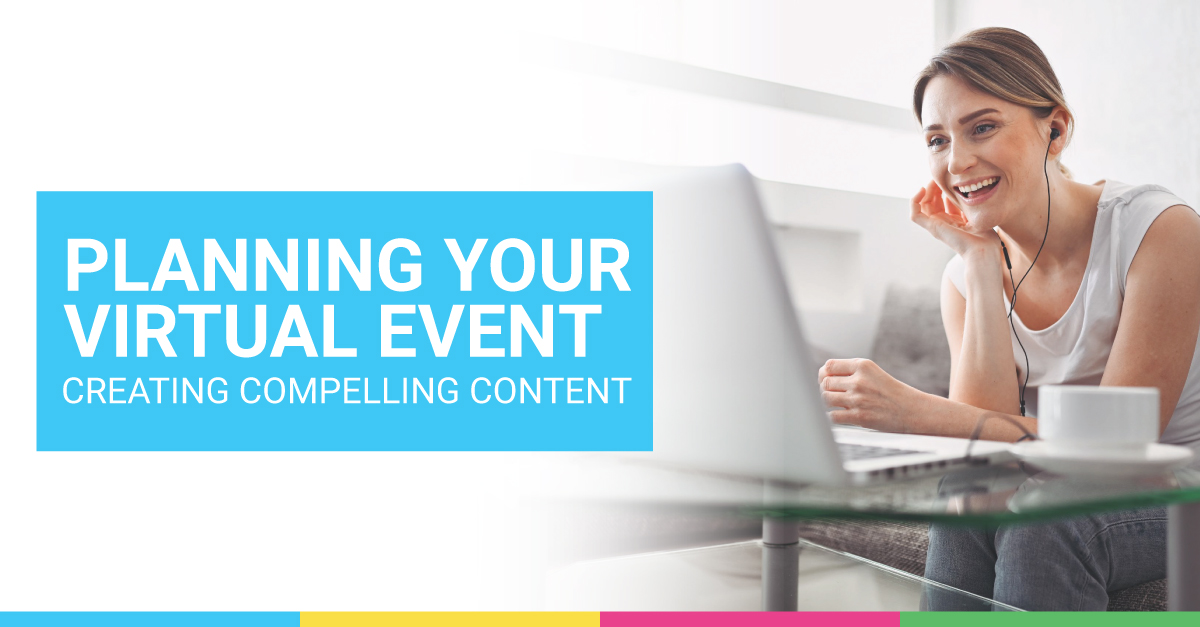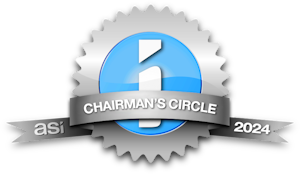
When you’re planning a successful virtual event, the attendee experience should be priority #1.
At in-person conferences and meetings, just being in the room — being part of a live audience and listening to a compelling speaker — can be an entertaining, invigorating experience. View that same presentation on a screen from your home computer, and the experience runs the risk of feeling low-energy, disconnected, or even flat-out boring.
To avoid this scenario, it’s important to plan creative, engaging content for every step and stage of your online event.
3 Stages of Content Planning
Virtual events are driving higher attendance rates for a number of reasons, including lower overall costs, zero travel time, and flexible scheduling opportunities for attendees, exhibitors, and sponsors.
Even with those advantages, a virtual event can still involve sitting through long online sessions — without the draw of a buzzing exhibit hall and in-person networking opportunities. This can be a hurdle to overcome, but it also means that the people who attend are genuinely interested in and willing to spend significant time learning about the topics presented at your event.
In other words, you definitely have a captive — and willing — audience from the start. Now you need to serve the content that will keep them interested for the duration of your event.
Pre-Event Content
Drive excitement leading up to your event with an email marketing campaign and branded social media posts.
Use these tools to detail the “what, when, and where” of your event, as well as the program schedule, registration information, best practices for navigating the event platform, and answers to FAQs.
In-Event Content
The most important content you’ll create is the content that’s actually presented during your virtual event. The following tips will help ensure your audience stays watching and engaged.
- Keep sessions shorter. When determining content length, consider your audience’s interest level in the topic and how much variety you can incorporate into each presentation to hold their attention.
- Mix things up. Even the best online speaker can seem to just run on after an hour of speaking straight into the camera, so add bonus footage or concise, professional-grade slides. This will create visual variety and emphasize specific points in the presentation.
- Add engagement sessions. Break up your content by adding a panel discussion and Q&A session at the end of presentations. Your audience will be more likely to stick around if they know there will be additional opportunities for engagement.
Post-Event Content
Smart content can continue to work for you, even long after your event is over. To continue educating and engaging your attendees, you can:
- Build and promote a content gallery. With a virtual event, all the content can be recorded for later viewing. Make this content available (either for free or for a fee) for your attendees to use as a resource down the road.
- Recap your event. Put together an all-in-one-place recap, complete with recorded sessions, links to interesting chat feeds or Q&A sessions, special announcements, or keynote speakers from your event. You can promote and share this package through social media or email, both for your attendees and for people who missed the event and might want to attend in the future.
- Share event highlights. Continue to post photos, videos, and other marketing materials to your website and social media platforms. This will keep folks engaged with your content and more likely to register for your next event.
One of the major benefits of a virtual event is the opportunity to reach a larger audience, so make the most of it with amazing content.
Do you have experience creating content for virtual events? If so, what content was particularly successful? And what content didn’t work as well?
If you’ve attended a virtual event, what content did you find most engaging? Share your stories with us!
In our next blog, we’ll discuss all things scheduling — both before and during your event. Do you have any specific questions about how to properly schedule a virtual event? If so, leave them in the comment section below and we’ll be sure to answer them in the next installment of this series.
Are you ready to get started now?
We’ve collaborated with our association partners to think outside the box when it comes to planning world-class virtual experiences.
In our FREE white paper, Reimagining Events for the Virtual World, we include everything you need to know to plan, promote, and execute your next virtual event.


